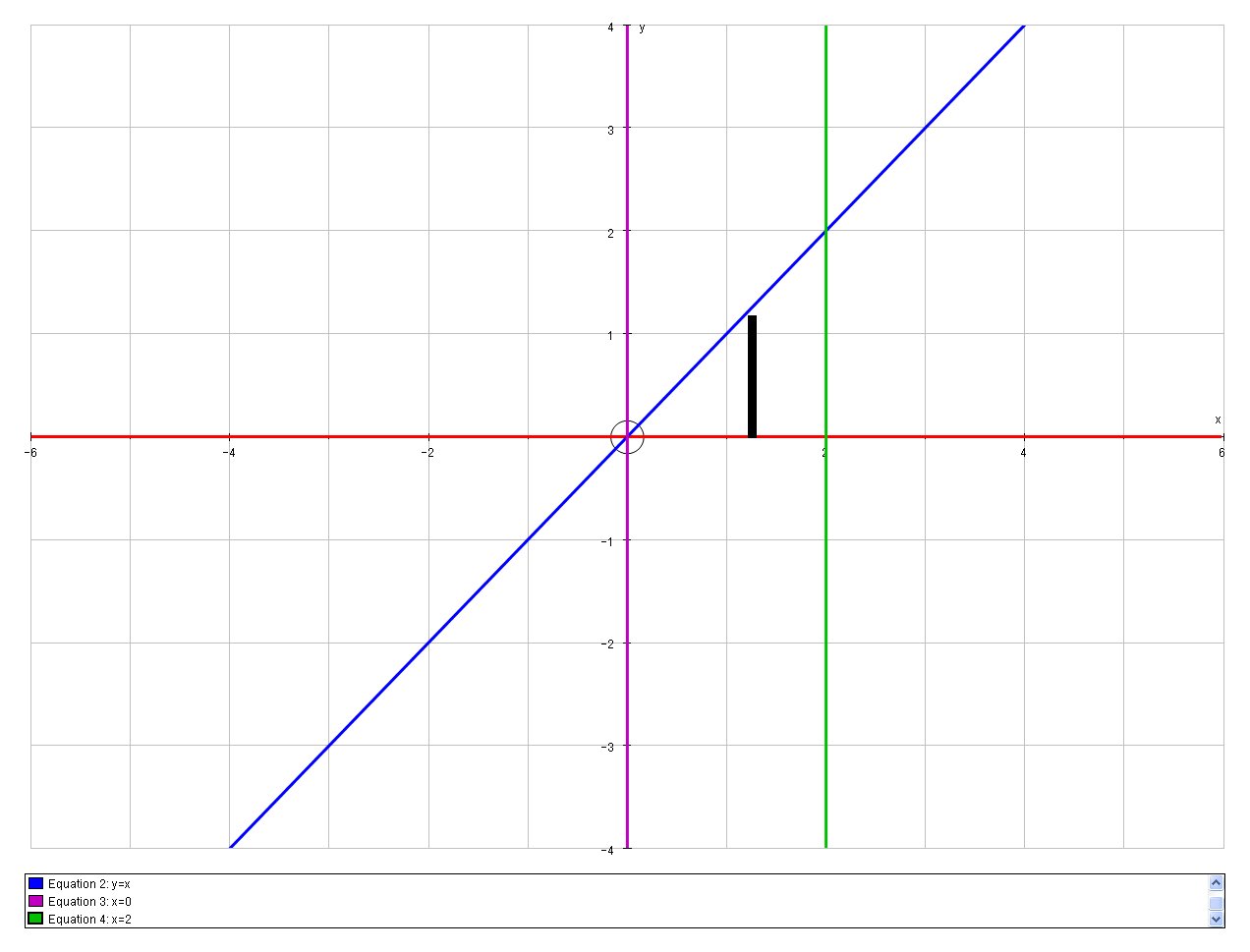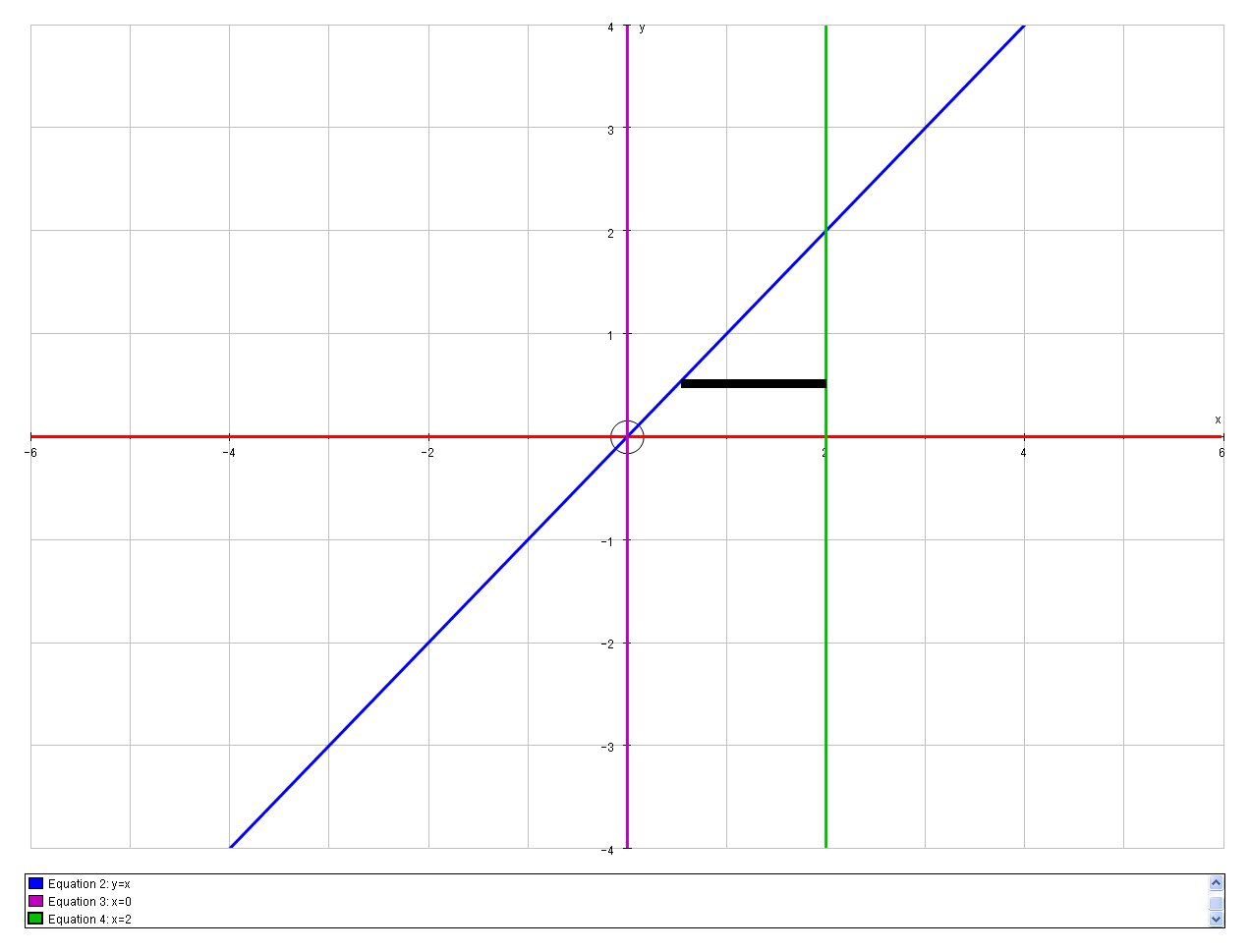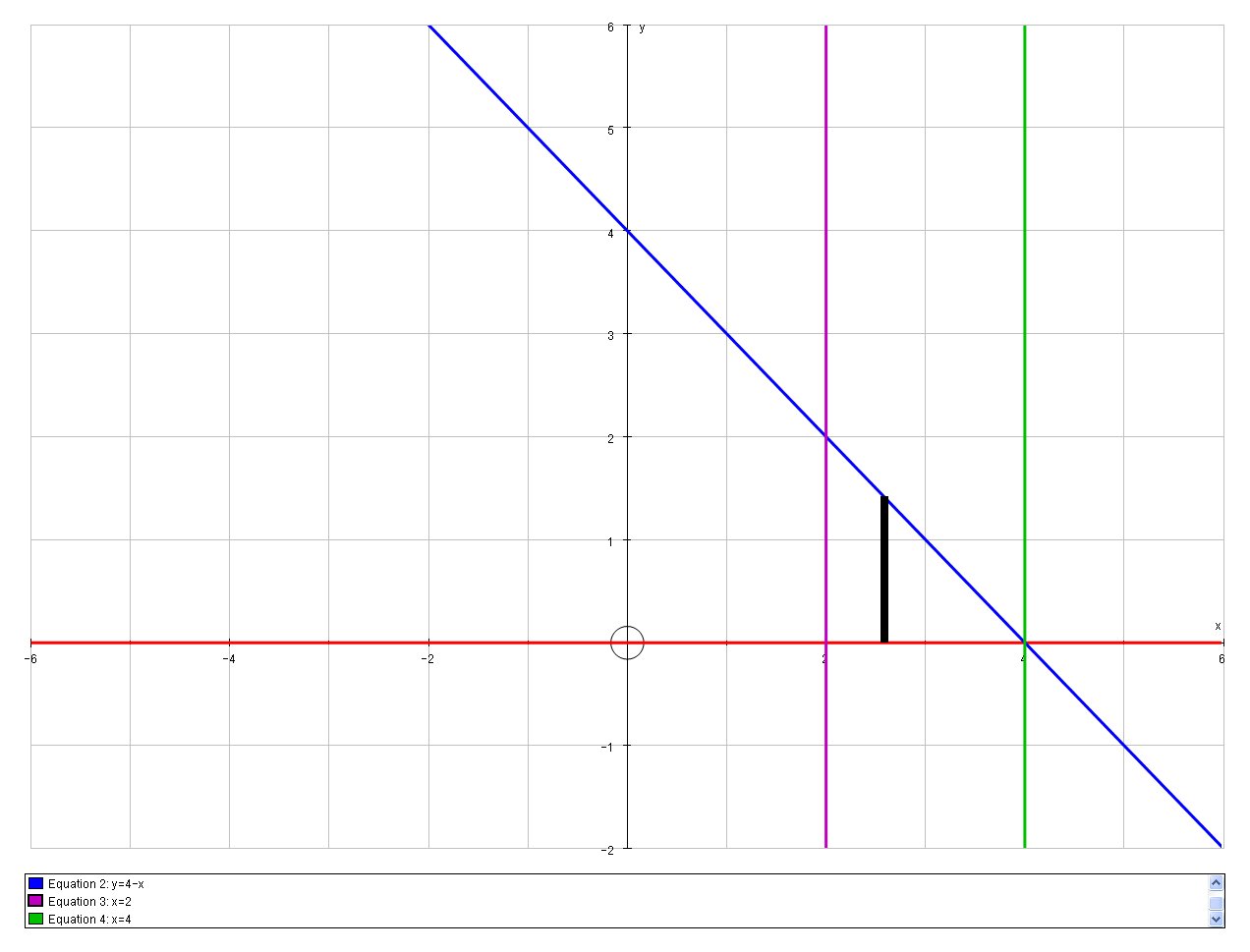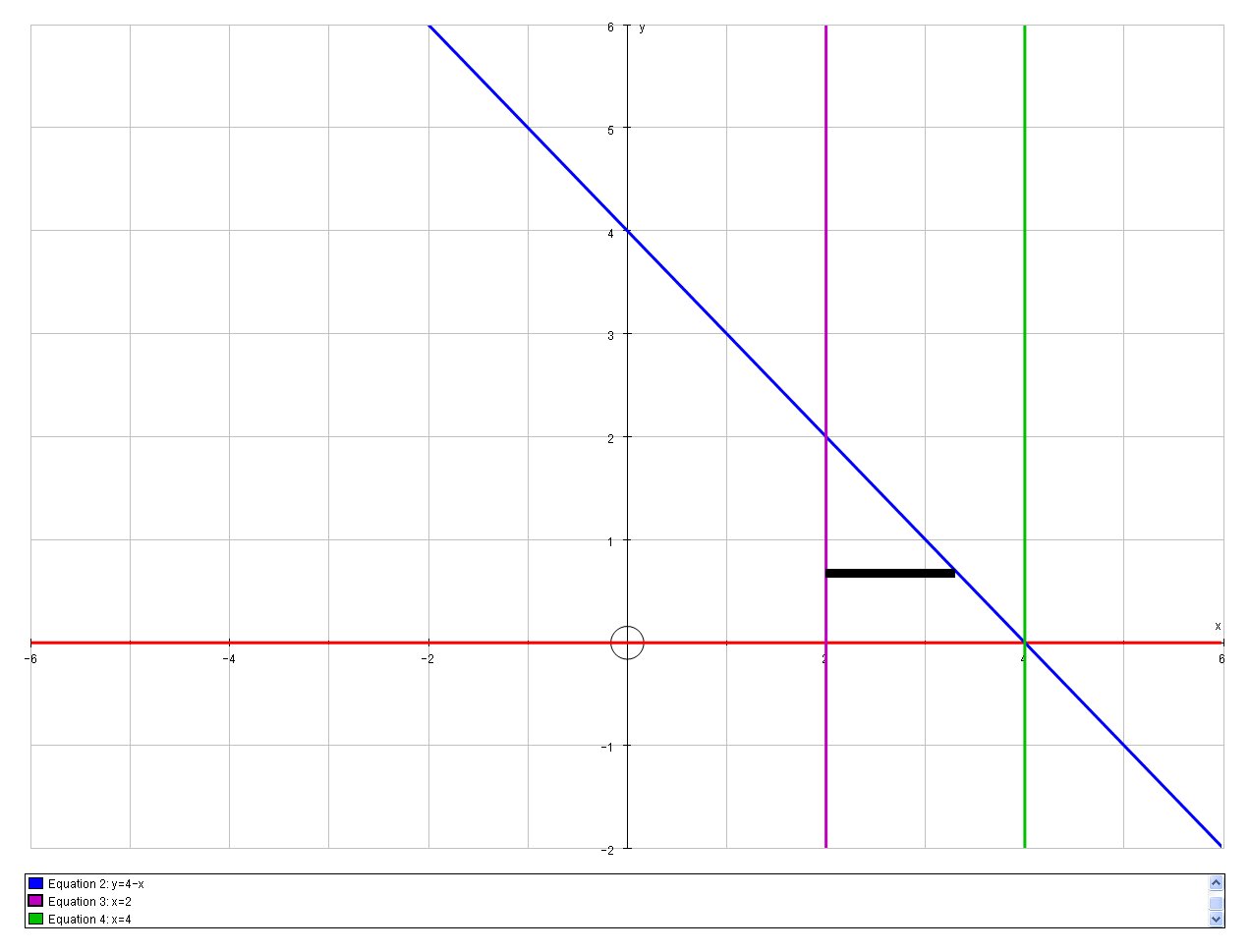How to draw the region R whose area is given by the iterated integral. Then change the integration order and show that both orders give the same area? With step by step solution please?
#int_0^2int_0^(x)dydx+int_2^4int_0^(4-x)dydx#
1 Answer
# int_0^2 \ int_0^x \ dy \ dx + int_2^4 \ int_0^(4-x) \ dy \ dx = 4 #
Explanation:
We seek:
# I = I_1+I_2# , where#I_1=int_0^2int_0^(x)dydx# ,#I_2=int_2^4int_0^(4-x)dydx#
Consider the First Integral:
The regions of the integral are as follows:
Where we sum first from
# I_1 = int_0^2 \ int_0^(x) \ dy \ dx #
# \ \ \ = int_0^2 \ [ \ y \ ]_0^(x) \ dx #
# \ \ \ = int_0^2 \ (x-0) \ dx #
# \ \ \ = [ \ x^2/2 \ ]_0^2 #
# \ \ \ = 1/2(4-0) #
# \ \ \ = 2 #
And if we reverse the order of integration:
We now sum first from
# I_1 = int_0^2 \ int_y^2 \ dx \ dy #
# \ \ \ = int_0^2 \ [ \ x \ ]_y^2 \ dy #
# \ \ \ = int_0^2 \ (2-y) \ dy #
# \ \ \ = [2y-y^2/2]_0^2 #
# \ \ \ = (4-2) - (0-0) #
# \ \ \ = 2 # , as before
|||||||||||||||||||||||||||||||||||||||||||||||||||||||||||||||||||||||||||||||||||||||||||||||||||||||||||||||||||||||
Consider the Second Integral:
The regions of the integral are as follows:
Where we sum first from
#I_2 = int_2^4 \ int_0^(4-x) \ dy \ dx #
# \ \ \ = int_2^4 \ [ \ y \ ]_0^(4-x) \ dx #
# \ \ \ = int_2^4 \ (4-x)-(0) \ dx #
# \ \ \ = [ \ 4x - x^2/2 \ ]_2^4 #
# \ \ \ = (16-8) - (8-2)#
# \ \ \ = 8- 6#
# \ \ \ = 2#
And if we reverse the order of integration:
We now sum first from
#I_2 = int_0^2 \ int_2^(4-y) \ dx \ dy #
# \ \ \ = int_0^2 \ [ \ x \ ]_2^(4-y) \ dy #
# \ \ \ = int_0^2 \ (4-y)-(2) \ dy #
# \ \ \ = [ \ 2y-y^2/2 \ ]_0^2 \ #
# \ \ \ = (4-2) - (0) #
# \ \ \ = 2 # , as before.
|||||||||||||||||||||||||||||||||||||||||||||||||||||||||||||||||||||||||||||||||||||||||||||||||||||||||||||||||||||||
Summary
Combining the results, irrespective of the order of integration, we have:
# I = int_0^2 \ int_0^x \ dy \ dx + int_2^4 \ int_0^(4-x) \ dy \ dx #
# \ \ = I_1 + I_2 #
# \ \ = 2 + 2 #
# \ \ = 4 #





